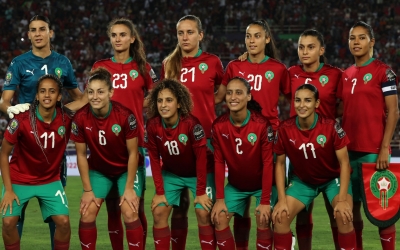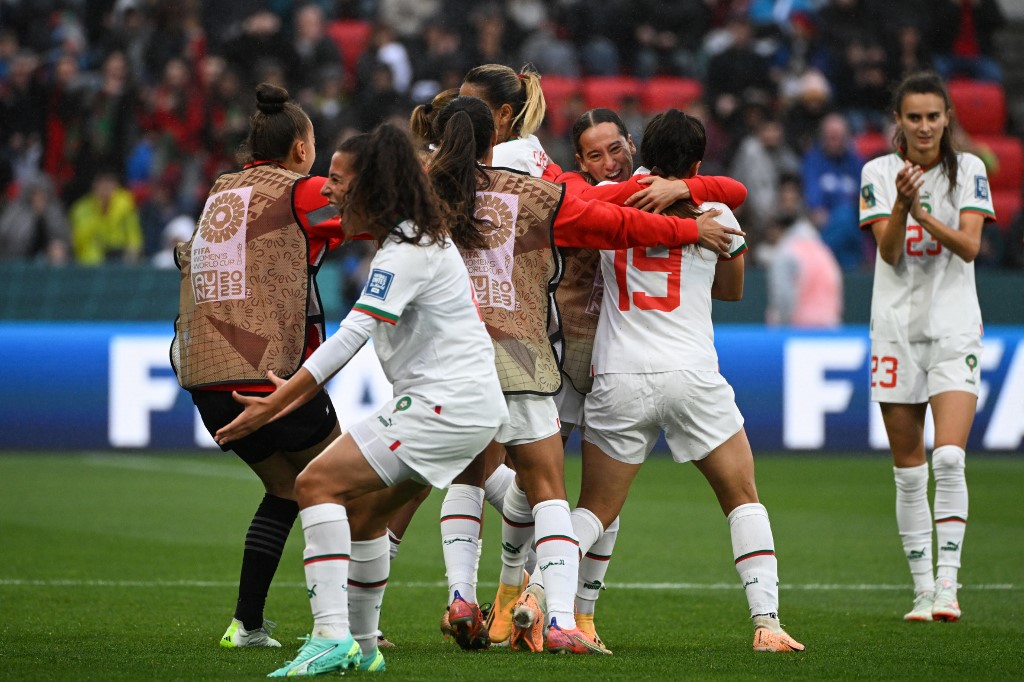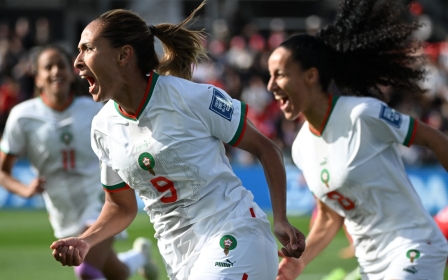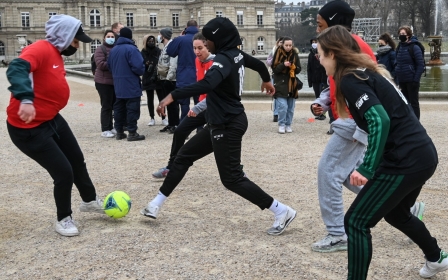Women's World Cup 2023: Morocco's success inspires the region
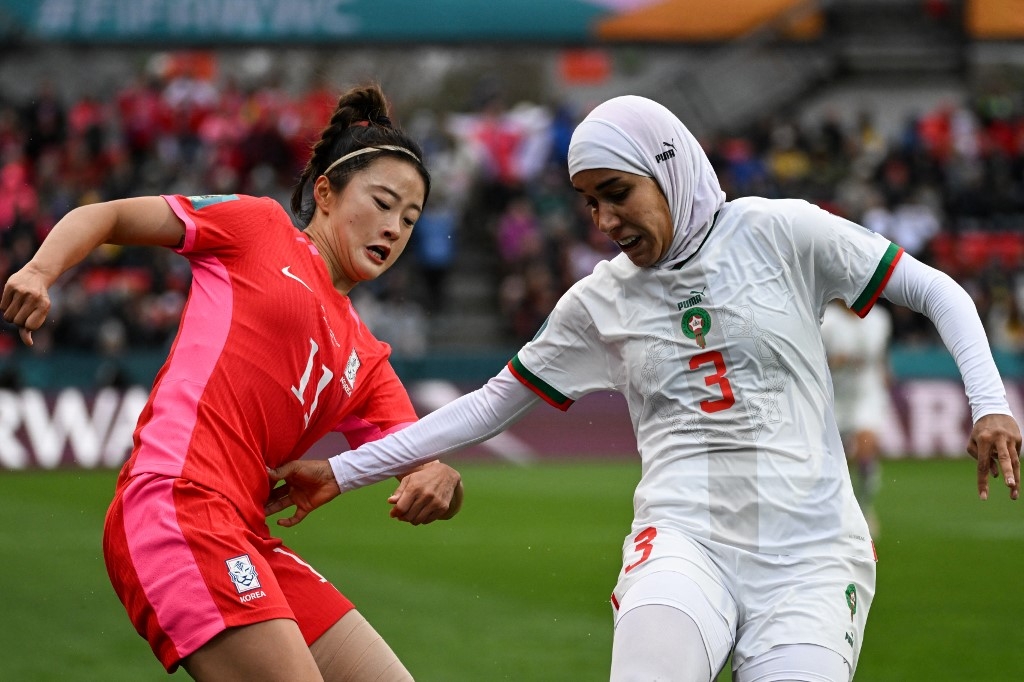
The Morocco women’s football team pulled off their biggest victory to date with a win at the Fifa Women's World Cup against South Korea in Adelaide, Australia on Sunday.
The Atlas Lionesses had already created history by qualifying for the tournament, becoming the first team from North Africa and the Arab world to reach the finals, the pinnacle of women’s international football.
Against the odds and facing a team 55 places above them in the global rankings, Morocco defeated South Korea by a single sixth-minute goal from striker Ibtissam Jraidi.
This victory in the North Africans’ second game of the tournament - after slumping to a heavy 6-0 defeat in their opener against Germany - has only increased the already considerable excitement and support across the Middle East and beyond, as people become more intrigued with this team’s groundbreaking journey.
After the game, goalscorer Jraidi dedicated the victory to fans at home and across the region, stating that “this victory is for Morocco and Arabs, it's the fruit of our hard work".
New MEE newsletter: Jerusalem Dispatch
Sign up to get the latest insights and analysis on Israel-Palestine, alongside Turkey Unpacked and other MEE newsletters
Following the heavy defeat in the game against Germany, Morocco's coach, Frenchman Reynald Pedros, made five changes to the starting 11 against South Korea, in order to add more defensive solidity.
In the process, defender Nouhaila Benzina, who was arguably the player of the match, made more history as she became the first player to wear a hijab at a World Cup.
Challenging taboos
Another win against group leaders Colombia on Thursday - who pulled off a shock 2-1 defeat of Germany on Sunday - would give Morocco a good chance of progressing from their group and into the last 16 knockout stage.
However, even if the journey ends with the Colombia game, there is a great sense of pride that the team has not only participated but competed at the highest level, along the way breaking new ground for women’s football in the region, challenging taboos and social norms.
The Moroccan women are inspiring a future generation to get involved in sports both at home and abroad.
For example, members of the Afghanistan national women’s football team, some of whom are now in exile in Melbourne, attended the Moroccan team’s first public training session. Under Taliban rule, women and girls are now banned from participating in any sports.
For the Afghan players - who have seen Fifa fail to recognise them - the sight of another Muslim-majority nation at this tournament gives them hope and inspiration that things can be different.
“This is a huge chance for the Moroccan team to show the world that Muslim women in every single country can participate,” an Afghan player who gave her name as Farida told the Associated Press news agency.
In part, this is why seeing Benzina putting on a commanding defensive display, while wearing the Islamic headscarf, is a particularly strong symbol - after the first, others will surely follow.
Morocco’s emergence as a force in women’s football is far from simple luck or chance.
This history-making team has come a long way in a short space of time through a coordinated strategy from the national football authorities and investment from King Mohammed VI, the country’s monarch.
The annual budget for women’s football has increased tenfold to $65m, driven mainly by an ambition to increase female participation in the sport. The Moroccan football federation is aiming for 90,000 women to be participating in football by 2024, citing the positive social impact that greater inclusion brings.
Worldwide acclaim
There has been much coverage of the investment in infrastructure, particularly following the success of the Moroccan men’s team at the World Cup in Qatar last year. There, the Altlas Lions made it all the way to the semi-finals before losing 2-0 to 2018 winners France, gaining worldwide acclaim for their attacking style of play and flair.
Facilities like the state-of-the-art King Mohammed VI Football Academy and King Mohammed VI Training Complex are helping the development of young Moroccan footballers - men and women.
Beyond infrastructure, the Moroccan football federation’s decision to turn the women’s national football league professional in August 2020 has also been key. Women's football clubs in Morocco's top division receive up to $130,000 each from the federation to fund the remuneration of players and staff. Female players in Morocco’s professional league can be paid up to $1,000 each month.
The federation's president, Fouzi Lekjaa, said the decision aimed to “develop women's football and spread its practice in all the regions of the kingdom” and described the move as “an important step to allow female talents to practice [football] in good conditions and to give them the opportunity to pursue their professional career”.
Investment and planning
In 2022, Morocco became the first North African country to host the Women’s Africa Cup of Nations (WAFCON). Doing so allowed the women’s team to showcase their talents to a home audience and change perceptions further around women in sports.
The tournament was a success on and off the field, with the Atlas Lionesses finishing as runners-up to South Africa, cheered on by a sellout crowd of more than 50,000 fans in the Prince Moulay Abdellah Stadium in Rabat.
All of this investment and planning has placed Morocco at the forefront of women’s football across the Arab and Muslim world. Now that they have made their mark on the tournament and recorded their first win, many will be cheering on them against Colombia.
Regardless of the result, though, the Morocco women’s team continues to be an example for all countries in the region - showing the merits of a more inclusive and diverse sporting environment.
The views expressed in this article belong to the author and do not necessarily reflect the editorial policy of Middle East Eye.
This article is available in French on Middle East Eye French edition.
Middle East Eye delivers independent and unrivalled coverage and analysis of the Middle East, North Africa and beyond. To learn more about republishing this content and the associated fees, please fill out this form. More about MEE can be found here.


